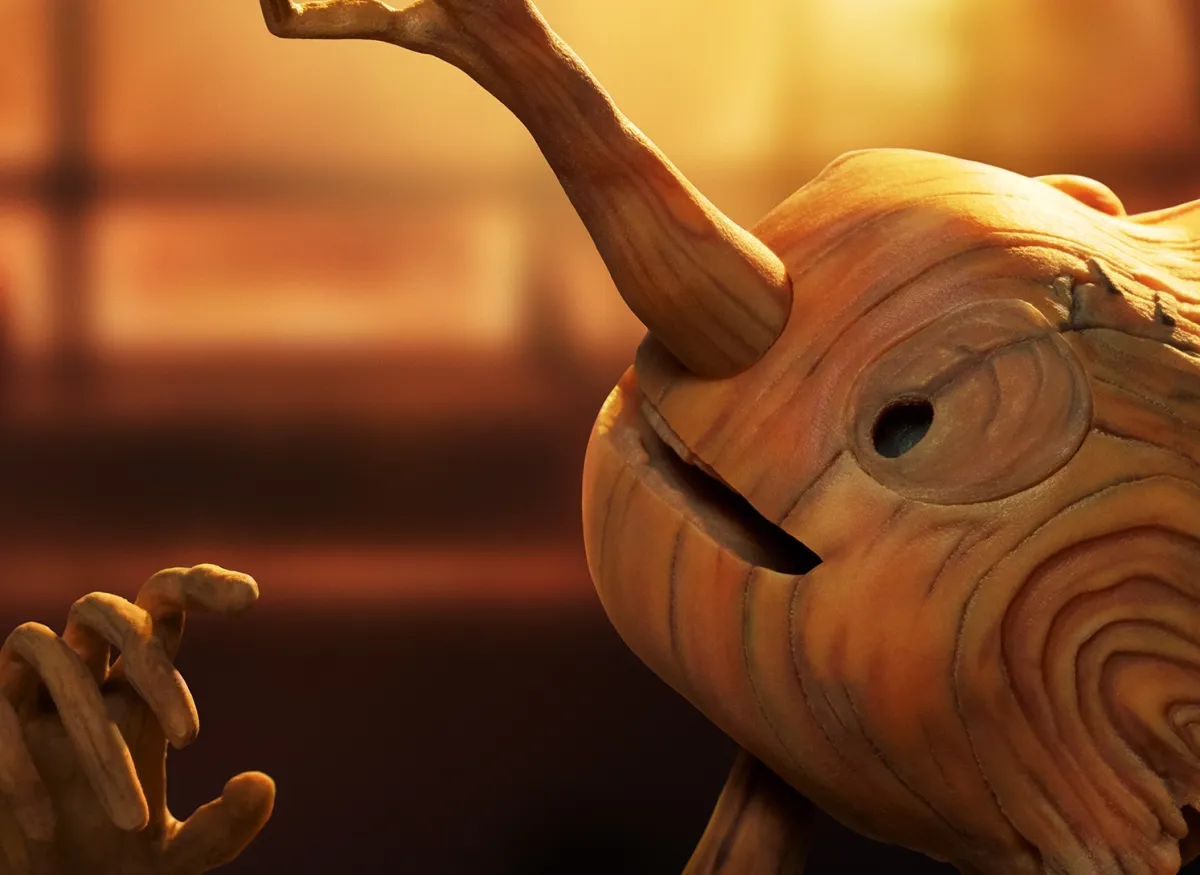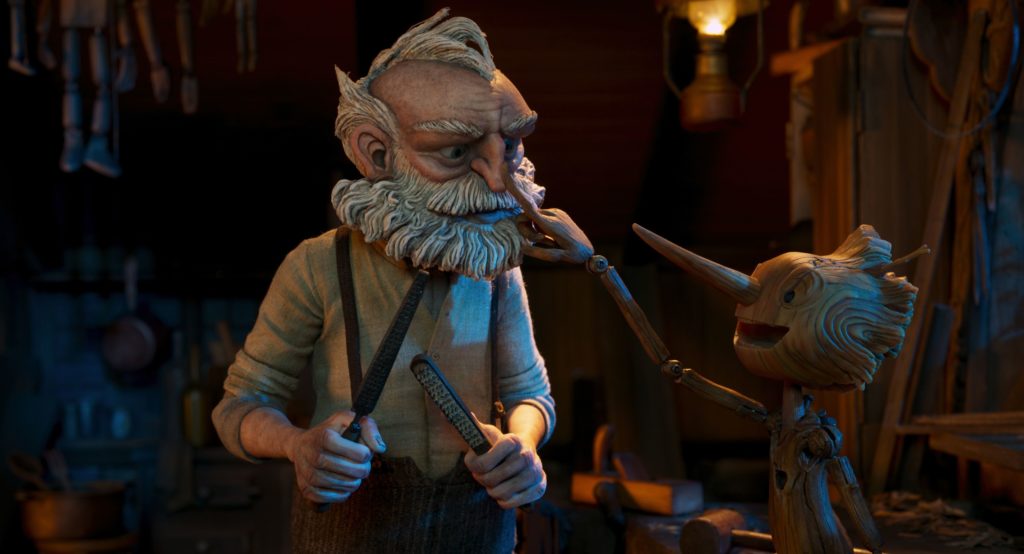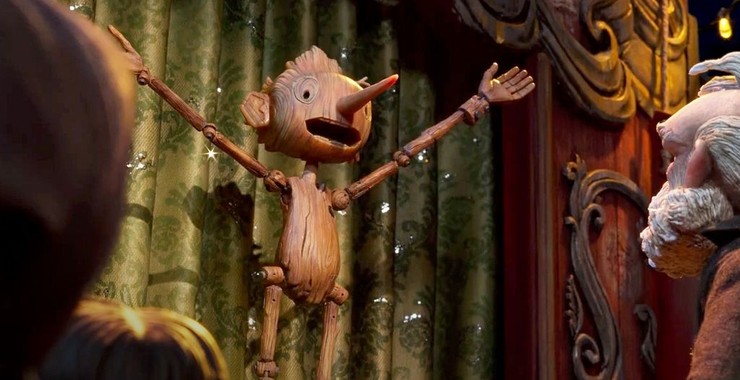Review: Guillermo del Toro’s Pinocchio

On Friday, December 9th, Netflix released Guillermo del Toro’s Pinocchio. There was a lot of buzz around this one, debuting with a 97% on Rotten Tomatoes. Coming off the heels of the release of his Cabinet of Curiosities on Netflix, Guillermo del Toro took his next opportunity to shine and ran with it.
I would like to preface this review with the fact that I’ve never seen the original Pinocchio animated film, the live action remake, nor read the book. I went into this as a fan of Guillermo’s aesthetic, story telling, and also a fan of stop-motion. Minor spoilers ahead.

A Story Rooted in Grief
The movie begins in 1918 with Geppetto, an old wood-worker, living in a small Italian village with his son, Carlo. It’s close to the end of World War I, and an unfortunate mistake results in the loss of Carlo’s life. Years later, Geppetto’s grief overtakes him and, in a drunken stupor, he creates the titular puppet. This is where the story begins.
Unlike what I’ve read about in the other adaptations, Pinocchio is brought to life by a guardian spirit looking to comfort the grief stricken man. This creates a bit more conflict, as Geppetto was not expecting there to be a living, rambunctious, and somewhat eerie looking wooden boy to be there when he woke up. Without Geppetto’s active wish for a boy, the story takes on a slightly new meaning.
A Story of Imperfect Fathers and Imperfect Sons
The key theme in this iteration of Pinocchio is that none of us are perfect, obviously. However, it’s how we handle our mistakes, frustrations, and emotions that truly matters. The relationship between Pinocchio and Geppetto is very contentious early on. Pinocchio, being new to the world, has no comprehension of how to behave, and Geppetto doesn’t have a grasp on how to navigate the new life he’s found himself in. This results in things being said and done that ultimately hurt. However, there are lessons to be learned in how what we say and do can affect others, and how we can rectify it once we say or do something harmful to those close to us. This theme reigns heavily in this film.

Beautiful Cinematography
Stop-motion animation is an incredibly difficult medium to nail down. There is a great short documentary on the making of Pinocchio. Same as the movie, it is available on Netflix. The attention to detail in the filming is phenomenal, such as the church in the village. Churches in the past took a long time to fully flesh out, so certain parts of the buildings would be older than others. Guillermo kept details such as this in mind, which resulted in a somewhat immersive experience.
There is a point in the documentary where Guillermo mentions it took around three months to film a single scene. The reasoning behind this is actually one of the reasons the cinematography stood out among most stop-motion films. The cameras are hardly ever stationary. The cameras pan quite often during scenes, which isn’t common in this medium. This technique made the movie look more like a live action film than most stop-motion films could ever achieve. The animation team should be highly commended for their work!
Final Thoughts
Guillermo del Toro’s Pinocchio is a fantastic story with great visuals and a few emotional musical numbers. It is an absolute recommendation, and while the themes can grow dark at times, it can still be a good movie for a family movie night. There are some parts children likely won’t understand as this is a movie set in Italy during World War II. Guillermo del Toro’s Pinocchio is available to stream on Netflix.
